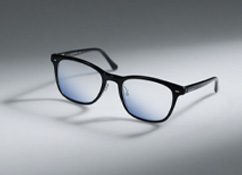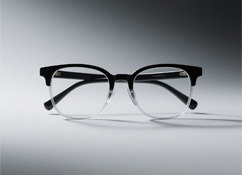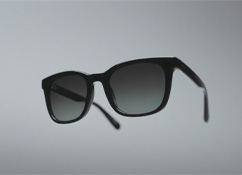In June, 38-year-old Mary noticed tiny black “mosquitoes” floating in her left eye—persistent floaters she couldn’t blink away. Before she could process it, a sharp stabbing pain shot through her eye, followed by a terrifying sensation: it felt like an invisible curtain was dragging across her vision, blurring everything in her left field of view.
“Am I getting cataracts at 38?” She panicked and rushed to the hospital. The diagnosis wasn’t cataracts—it was retinal detachment—a condition where the light-sensitive retina pulls away from the eye’s inner wall.
Dr. Ethan Lee is a board-certified ophthalmologist and Acting Associate Chief of Ophthalmology at Orange County Medical Center (Group) Orange Hospital. With over 15 years of experience, he specializes in minimally invasive surgery for vitreoretinal diseases—including retinal detachment, diabetic retinopathy, and cataract surgery.
Clinic Hours: Monday mornings (Orange Hospital East Campus); Wednesdays (Orange Hospital); Thursday mornings (Grace Hospital)
The retina is a thin layer of tissue at the back of the eye that converts light into signals for the brain. In front of it sits the vitreous humor—a gel-like fluid that fills the middle of the eye. When we’re young, the vitreous is thick and sticks tightly to the retina. But as we age (usually by 45), it liquefies and pulls away from the retina (a process called posterior vitreous detachment, or PVD).
For most people, PVD is harmless. But if the vitreous is stuck to a weak spot on the retina, eye movement can tear the retina. Once a tear forms, liquefied vitreous seeps underneath—lifting the retina away from the eye wall and causing detachment.
Retinal detachment can happen to anyone, but these groups are at higher risk:
- High myopia (-6.00 diopters or more): Severe nearsightedness stretches the eye, thinning the retina and making it more prone to tears.
- Older adults (50+): Vitreous liquefaction and PVD become more common with age.
- Eye trauma (e.g., a blow to the eye): Can tear the retina directly or trigger vitreous detachment.
- Family history: If a close relative had retinal detachment, your risk doubles.
When people hear “retinal detachment treatment,” they often think of silicone oil injection surgery—a traditional method that involves removing the vitreous (vitrectomy), sealing the tear with a laser, and injecting silicone oil to hold the retina in place. While effective, this surgery is invasive: it requires a longer recovery, higher costs, and a second procedure to remove the oil.
Today, gas injection therapy offers a gentler alternative. Here’s how it works:
- The surgeon locates the retinal tear using a special lens.
- A laser seals the tear (like “welding” the retina to the eye wall).
- A small amount of sterile gas (air or inert gas like SF6) is injected into the eye.
The gas bubble floats to the top of the eye, pressing the detached retina against the wall—holding it in place until the laser seal heals.
- Minimal trauma: No vitrectomy needed for most cases (preserves eye structure).
- Faster recovery: Most patients resume light activities (e.g., desk work) within 2–3 days.
- Lower cost: Fewer surgical steps mean lower out-of-pocket expenses.
- No second surgery: Gas is absorbed naturally—no need to remove it later.
The key to success with gas injection? Proper head positioning.
After surgery, you’ll need to keep your head tilted so the gas bubble presses directly on the detached retina. Your doctor will give you a specific position (e.g., face-down for upper retinal tears, side-lying for lower tears) to maintain for 4–6 hours a day. This helps the retina reattach and heal.
- Use a special positioning pillow (e.g., a “retina pillow”) to make face-down positioning more comfortable.
- Avoid bending over, lifting heavy objects (>10 lbs), or rubbing your eyes—these can disrupt the bubble.
- Skip air travel or high-altitude areas: Changes in pressure can expand the bubble, increasing eye pressure and risking damage.
- Take prescribed eye drops (anti-inflammatories, antibiotics) to prevent infection and swelling.
Yes—gas bubbles are temporary. Here’s what to expect:
- Air bubbles: Absorbed in 5–7 days (works best for small detachments).
- Inert gases (SF6 or C3F8): Take 2–3 weeks to dissolve (better for larger detachments).
The bubble’s job is to hold the retina in place until the laser seal fully heals—usually 4–6 weeks. Even after the bubble disappears, avoid strenuous exercise (e.g., running, weightlifting) for 1 month: the retina needs time to strengthen.
Gas injection is a game-changer, but it’s not right for everyone. You may need traditional surgery if:
- Your tear is in the lower retina: Requires face-down positioning 24/7—most people can’t tolerate this long-term.
- You have “opaque media”: Cataracts, vitreous hemorrhage, or corneal clouding block the surgeon’s view of the tear (can’t seal it with a laser).
- Your detachment is chronic: If the retina has been detached for more than 2–3 weeks, it becomes stiff (“tented”) and won’t reattach with gas alone.
- You can’t follow positioning rules: People with neck/back pain or mobility issues may struggle to maintain the required position.
Retinal detachment is a vision emergency. The longer the retina is detached, the higher the risk of permanent vision loss (the retina needs oxygen from the eye’s inner wall—without it, cells die).
If you notice any of these symptoms, go to an ophthalmologist or emergency room immediately:
- Sudden increase in floaters (tiny spots, “mosquitoes”).
- Flashes of light (like “lightning” in your peripheral vision).
- A “curtain” or “shadow” closing in on your vision.
- Blurred vision in one eye.












